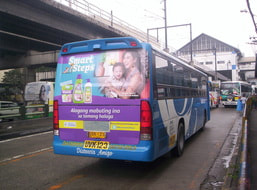What is a bus sticker?
Plus, they come in a variety of sizes and colors, so you can find the perfect one for your car. If you're looking to get creative, consider using bus decals to promote your business or event. They're perfect for making a statement, and can really catch people's attention.
How to prepare a bus sticker for printing
First, The first step is to prepare your graphics file. Your stickers should be in the same resolution as your print device - this means that they will fit on the print bed without any overlapping or cropping. Vectors must be processed on vector base programs like Adobe Illustrator.
If for some reason you need over size or large format sticker, use a 2 inch bleed on all sides if you ever need tiling or overlapping, particularly with bigger images. You can do this by preparing your files using a EPS or TIFF printer, and setting the recommended resolution for that type of printing. 72 dpi works fine on bus related graphics.
Next, you'll need to make sure that all of your layers are properly named and saved in Photoshop or your favorite graphics software. This makes it easy to identify each layer when editing later on, preventing potential confusion between them during printing.
Naming convention is one of the best practices in this sector of printing, such as bus sides.tif and bus sides.jpg if this will be used for the sides, for a sticker on the windshield a file naming like windshield.jpg would be easy to differentiate.
Finally, save your file as be sure to test-print your stickers on different types of sticker paper to find the best results. As a general rule, printing on a PVC based sticker works best on decals like bus sticker.
Once everything is formatted correctly, it's time to get printing! Make sure you have all the supplies you'll need on hand - like tape measure, adhesive tape, rugs and scissors - before you start. You may even need a helper if you will be doing large format bus graphics.
How to install bus stickers
1) Place the stickers onto a level surface
2) Mark the placement of each sticker on the surface using a pencil or marker, remove the adhesive backing from your sticker
3) Using adhesive tape, stick each sticker to its corresponding location, once positioned, press down firmly to adhere it to the glass.
4) Peel away any excess adhesive tape and stick another sticker over the first one - making sure that both stickers are lined up precisely against each other.
5) Finally, make sure all edges are smooth by trimming off any leftover adhesive with scissors or a knife
How to remove bus decals?
1) Wet the glass cleaner or rubbing alcohol
2) Use a Q-tip to insert it into the adhesive and start pulling
3) The sticker will come off in sections, so be patient!
Frequently Asked Questions
What are some tips for printing bus stickers without them coming off?
What type of material should I use for bus stickers?
The adhesive vinyl is a type of vinyl (polyvinyl chloride) used in car stickers and other applications that is self adhesive. This material, which has high tensile strength, can be easily applied to various surfaces without leaving residue or damage upon removal. Once this decal has been removed from an object it will leave little to no impression on whatever surface was previously covered.
Make sure that your sticker material is large enough so it will cover the entire backside of the bus or other transportation vehicle.
How can I make my bus sticker designs look perfect every time?
Are there any other factors that I need to take into account when printing bus stickers?
First and foremost, make sure the stickers are big enough so that people can see them from afar - but small enough so that they don't get damaged when stuck on buses.
Second, use high quality sticker paper and a good printer. The sticker should be resistant to fading and water damage. For indoor bus signage, a water based printer is enough. Likewise, a solvent printer for outdoor purpose.
Lastly, make sure the stickers are easy to remove without leaving any adhesive residue behind. This is especially important when you want to reuse them later on.
Which type of stickering works best in different climates, e.g., cold weather, hot weather, rain/snow mix conditions or sunlight exposure?
Vinyl stickers, on the other hand, are best suited to hot weather, cold weather, rainy/snowy mix situations, and sunlight exposure.
Conclusion
Contact us now for your bus decals!

 RSS Feed
RSS Feed